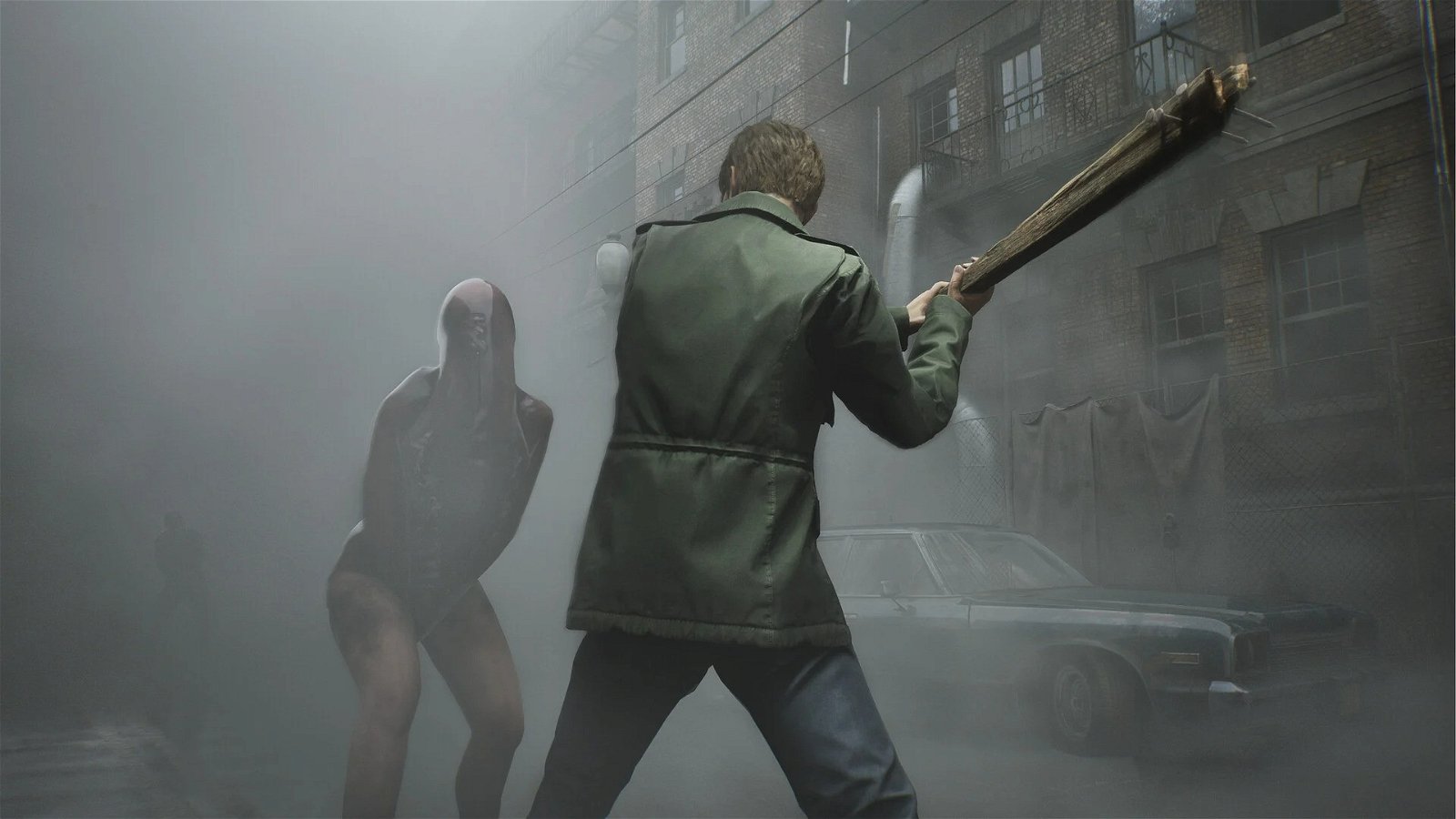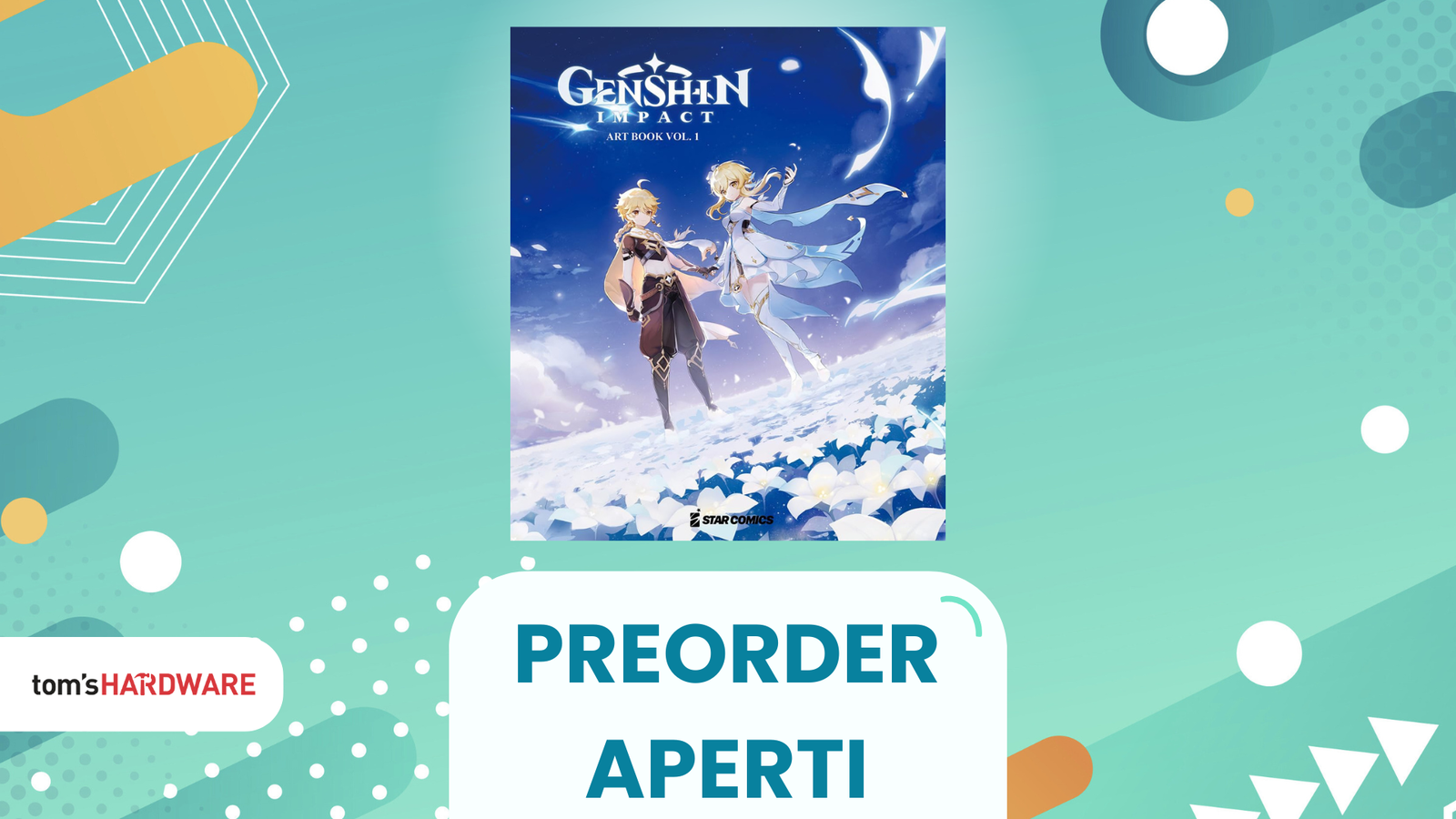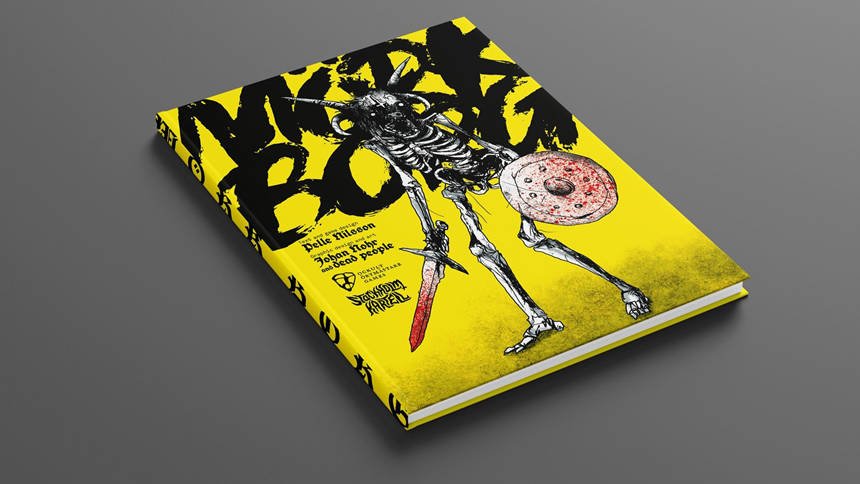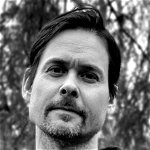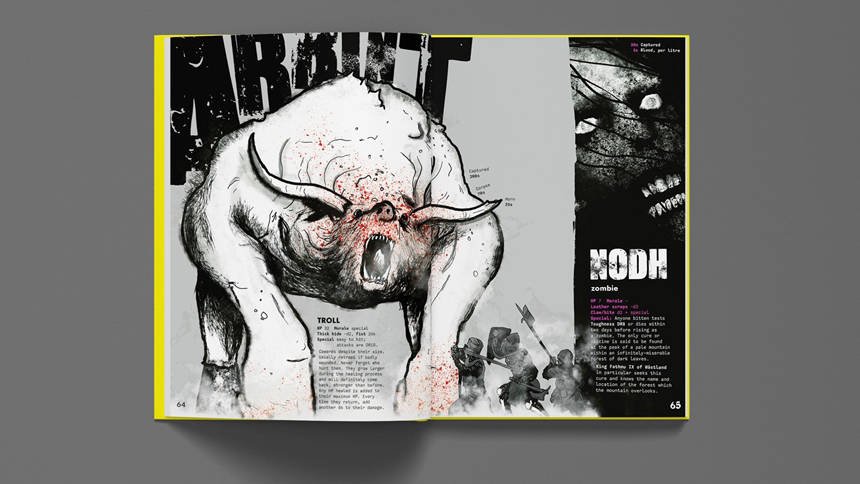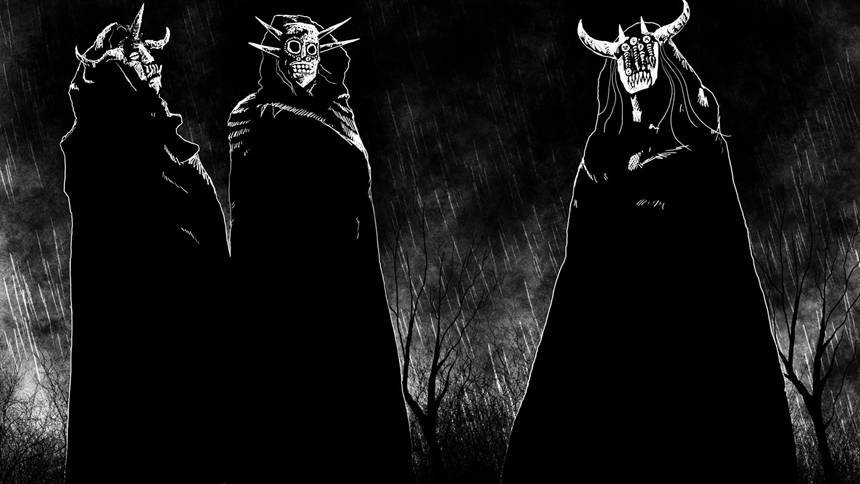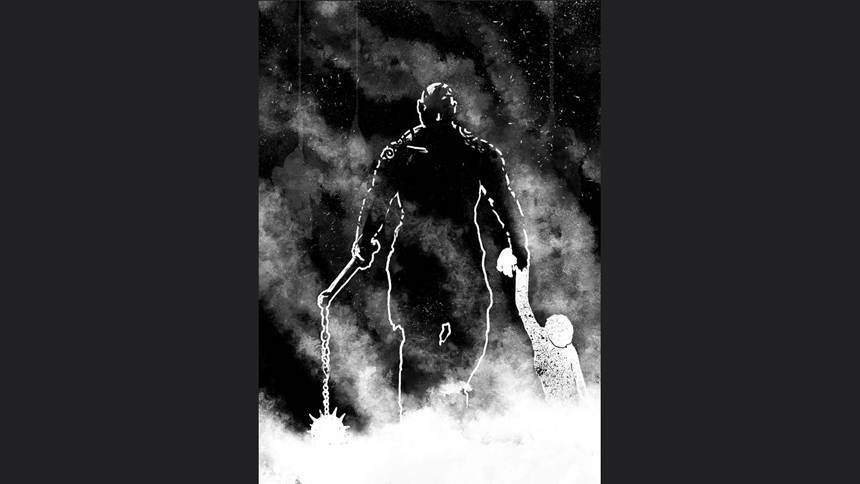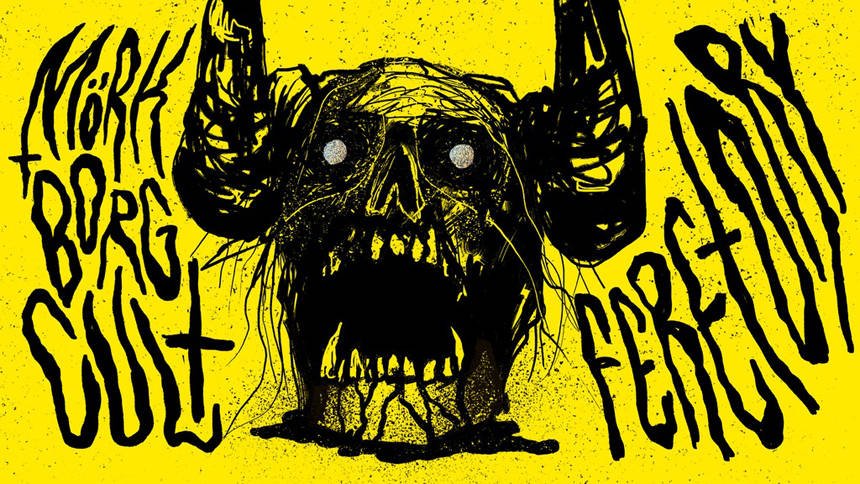MÖRK BORG, di cui potete leggere la nostra recensione, è un gioco di ruolo davvero peculiare che ci ha piacevolmente stupito per la sua capacità di coniugare in un unico prodotto un GdR fantasy apocalittico estremamente cupo e un artbook davvero stupefacente.
Creato dagli studi di game e art design svedesi Ockult Örtmästare Games e Stockholm Kartell e pubblicato da Free League Publishing sotto la nuova etichetta Free League Workshop, MÖRK BORG è un gioco di ruolo OSR (Old School Renaissance), che si rifà dunque al modo di giocare di ruolo tipico degli anni ’70 e ’80, quello degli albori.
Visto che questo prodotto ci ha letteralmente conquistati, sia per il suo sistema di gioco estremamente rapido e semplice, sia per il geniale lato artistico, abbiamo voluto intervistare Pelle Nilsson (Ockult Örtmästare Games) e Johan Nohr (Stockholm Kartell), gli autori di MÖRK BORG.
Salve Pelle, salve Johan, grazie per il vostro tempo. In Italia, MÖRK BORG ha suscitato molto interesse e curiosità e vorremmo conoscere meglio i suoi autori. Raccontateci qualcosa di voi, di Ockult Örtmästare Games e di Stockholm Kartell.
Pelle: Scrivo giochi da molti anni, dalla metà degli anni '80. Sebbene abbia perso interesse per i giochi di ruolo per circa una quindicina di anni (1991-2006 o qualcosa del genere). Il primo gioco che ho stampato (da solo) è stato un piccolo gioco post apocalittico chiamato Ut mot skären, un mix di fantasy e di un qualche strano genere tipo Gamma World (gioco di ruolo Sci-fi/fantasy post apocalittico pubblicato dalla TSR nel 1978. NdR). Non è stato molto tempo fa, era il 2018. Lo stesso anno io e Johan abbiamo pubblicato (sempre per conto nostro) un gioco horror nordico chiamato Barkhäxan. Quel gioco è ancora abbastanza popolare in Svezia. Entrambi i giochi sono stati pubblicati solo in svedese. Ci piace molto lavorare insieme e abbiamo deciso di fare un altro manuale. Dal primo giorno ho voluto che si chiamasse MÖRK BORG, e a Johan piacque molto quel nome.
Johan: Per quanto mi riguarda, gioco e realizzo cose legate al gioco da circa il 2000. Realizzavo art work come freelance per un'azienda svedese chiamata Järnringen, di cui in seguito sono diventato uno dei proprietari, quando abbiamo realizzato il gioco di ruolo Symbaroum. Subito dopo che me ne sono andato, si sono fusi con Free League, ma da allora ho continuato a lavorare come freelance e li ho aiutati con Mutant Year Zero, Forbidden Lands e Vampire The Masquerade, tra le altre cose. Per quanto riguarda Stockholm Kartell, ci piace definirci una congrega creativa di scrittori, designer e idioti. In pratica siamo un gruppo di amici che la pensano allo stesso modo e giocano un certo tipo di giochi di ruolo, si divertono con il doom metal e ogni tanto creano cose come moduli di avventura, zine e giochi.
Abbiamo visto che MÖRK BORG è uscito per la sottoetichetta "Free League Workshop" di Free League Publishing, cosa potete dirci di questo nuovo progetto editoriale?
Pelle: Questa potrebbe essere una domanda per Free League Publishing. Ma sono abbastanza convinto che siano estremamente interessati a giochi di ruolo che si posizionino al di fuori della loro bolla di grande successo, e hanno avuto difficoltà a dire "no" quando abbiamo inviato loro del materiale. Non è stato scritto o illustrato da loro, quindi hanno avuto bisogno di una sorta di sottoetichetta. Devo dire che non sono sicuro al 100% che MÖRK BORG sia stato il seme iniziale dell'idea Free League Workshop, ma è stato il primo libro pubblicato.
MÖRK BORG è un prodotto editoriale davvero peculiare, cosa vi ha ispirato a creare questo gioco con la sua anima doom metal?
Pelle: volevo un gioco veloce e facile da imparare, adatto a convention ed eventi simili. Ho scritto un insieme di regole che stessero su una pagina (entrambe le facciate di un foglio A4). Poi, ho scritto un altro documento con le sei classi e i presagi. Dato che la musica è una parte importante della mia vita, e sia io che Johan amiamo il doom metal, si è sviluppato in una specie di progetto di gioco musicale. Per quanto mi riguardava, non doveva solo trattare di un destino tragico, ma anche di black metal. Senza limiti né tenendo troppo in considerazione le aspettative. Spesso penso alla scrittura come alle prove di una band, in cui sono libero di creare esattamente ciò che voglio (cosa che non potevo fare quando facevo musica negli anni '90, ora sono troppo vecchio per fare ciò che solo gli altri vogliono... eheh). Quando leggo alcune parti del libro, posso vedere cosa stavo ascoltando: la parte Anthelia/Kergüs erano i Bathory, Sarkash erano i Darkthrone e Grift la grande band britannica Cathedral. Un giorno voglio dedicare un libro a Lee Dorrian (cantante e compositore dei Cathedral e dei Napalm Death. NdR).È cresciuto abbastanza velocemente: abbiamo aggiunto più tabelle, un'ambientazione, e quando era pronto circa il 75%, abbiamo proposto l'idea a Free League Publishing.
Johan: Siamo entrambi grandi fan della musica doom e black metal e volevamo creare un gioco che in qualche modo incarnasse ciò che vediamo in quei generi. La disperazione, la brutalità, il nichilismo e le immagini occulte. Ma sempre con senso dell'umorismo. Volevamo che il gioco fosse insolente sotto ogni punto di vista. Nel modo in cui è scritto, nel sistema di gioco e nella presentazione visiva. Non avevamo idea se sarebbe stato accolto bene od odiato, ma apparentemente ha funzionato.
Quali sono state le maggiori sfide che avete dovuto affrontare nello sviluppo di MÖRK BORG?
Pelle: La scrittura è stata come un'ondata di ispirazione e per nulla difficile. In effetti, non ricordo di aver effettivamente scritto la cosa! Non voglio sembrare un Alesteir Crowley (esoterista e occultista britannico vissuto tra la fine dell'Ottocento e la prima metà del Novecento e protagonista di una canzone di Ozzy Osbourne. NdR) posseduto, ma è stato così. Alcune tabelle alla fine del progetto sono state un po' una rottura di palle, ma Johan ha dato una mano e ha persino scritto alcune tabelle da solo.
Johan: Per quanto mi riguarda, stampare questa cosa. Quando abbiamo discusso i dettagli pratici con la tipografia, ci hanno inviato un elenco di cose tecniche che potevamo fare e ci hanno chiesto quali volevamo. Abbiamo risposto "tutte." Ci sono così tanti fronzoli su questa cosa che mettere insieme i file di stampa è stato un incubo, ma divertente. Penso che alla fine abbiamo inviato qualcosa come venticinque PDF diversi; e poi tutti i diversi tipi di carta, modelli di lamine metalliche e nastri segnalibro stampati personalizzati ecc. Ma, probabilmente per la prima volta nella mia vita professionale, il libro è esattamente come lo immaginavo. Quindi ne è valsa la pena.
La componente artistica di MÖRK BORG è davvero impressionante ed è completamente integrata con il testo, sia per quanto riguarda la descrizione dell'ambientazione sia per quanto riguarda le regole. È stato difficile gestire la commistione di testi e immagini in modo così efficace?
Johan: Il processo è stato abbastanza diverso da quello che si fa di solito quando si producono manuali di gioco di ruolo o libri in generale. Prima di tutto, non abbiamo mai avuto un numero di pagine predefinito con cui lavorare. Abbiamo solamente progettato il libro così come volevamo e non ci importava veramente di quante pagine fosse composto una volta finito. C'è molto spazio vuoto e grafica a tutta pagina e affrontiamo la tipografia in modo molto diverso dai prodotti GdR convenzionali. E abbiamo anche prodotto molta scrittura e molto layout contemporaneamente; avremmo aggiunto o rimosso contenuti, se ne avessimo avuto bisogno, in funzione del design grafico, o avremmo scritto una o due tabelle per bilanciare la disposizione. Sostanzialmente, realizzare il libro non è stato una serie di passaggi separati, ma uno sforzo creativo continuo.
Cosa vi ha ispirato per la parte artistica del gioco?
Johan: Volevamo creare un libro che non assomigliasse a nessun altro libro là fuori. In molti modi, questo è stato un progetto artistico, un esperimento per vedere fino a che punto potevamo spingere i limiti del book design convenzionale. Ci siamo ispirati a zine punk e metal, a poster di concerti e copertine di dischi, ma anche a videogiochi, design di riviste e creepypasta. E semplicemente al sound del doom e black metal e ai sogni deliranti, suppongo.
Perché avete deciso di sviluppare un gioco OSR e non di puntare a un prodotto più "moderno"?
Johan: Penso che "moderno" sia un termine sbagliato per una sorta di antitesi agli OSR, a causa di quanta creatività e innovazione stanno accadendo in quel genere, ma capisco cosa intendi. Quando abbiamo realizzato questo gioco non c'è stato alcun impulso nostalgico, nessuno sforzo per andare indietro o di onorare alcun tipo di retaggio dei giochi di ruolo. È solo un sistema super minimalista nello stesso stile del tipo di giochi che amiamo giocare.
Pelle: Sono molto interessato alla scena OSR e mi piacciono molto i giochi come The Black Hack, Into the Odd, Old-School Essentials e il gioco che ha dato il via a tutto, dal 1974 in poi. Io stesso voglio giocare ai giochi leggeri della vecchia scuola, quindi quella scelta non è stata affatto complicata.
L'ambientazione di MÖRK BORG è più legata alle sensazioni e ai sentimenti che alla descrizione del mondo di gioco. Come Game Master ho letteralmente adorato questo approccio e la libertà che ci avete dato per poter realizzare la nostra visione del mondo, ma ammetto che vorrei saperne di più sui Basilischi...
Pelle: La conoscenza dei Basilischi è meglio demandarla a ciò che viene dettato dalla tua immaginazione e da quella di chiunque altro. È un po' come un musicista che spiega i suoi testi: il 99% di quelli seri non vuole farlo.
Johan: Sì, penso che vorremmo mantenere le cose il più aperte possibile per incoraggiare altri GM e gruppi di gioco là fuori a fare proprio il mondo di gioco. Non aspettate che arrivi una nostra spiegazione: inventatevela da soli! Nel momento in cui lo acquistate, il gioco non è più nostro, è vostro e ci potete fare tutto ciò che volete.
Prevedete di rilasciare un supplemento che approfondisca la storia e la geografia dei luoghi menzionati nel manuale?
Pelle: c'è una zine con contenuti creati dai fan che verrà lanciata ora, ad aprile. Il contenuto è sorprendente. Questo è esattamente quello che volevamo che accadesse da ora in poi: un mondo di gioco aperto con il suo universo narrativo e persone che scrivono cose di altissima qualità. Per questo motivo abbiamo dato il via al cosiddetto MÖRK BORG CULT. Non abbiamo deciso nulla di ufficiale per il futuro. È un po' un rischio "raccontare la vera storia" di luoghi ed eventi. Tende a uccidere l'ispirazione degli altri.
Johan: Al momento stiamo realizzando un Kickstarter (che partirà il 15 aprile) chiamato MÖRK BORG CULT: FERETORY, una raccolta stampata di molti contenuti realizzati dalla comunità che sono stati pubblicati come parte del nostro programma MÖRK BORG CULT. Dategli un'occhiata! Oltre a quello, ne arriveranno altri. Non siamo pronti a dire cosa, però, ma ne arriveranno altri.
Avete già nuovi progetti in cantiere? Potete darci qualche informazione in anteprima?
Pelle: Oltre alla già citata zine, il materiale del MÖRK BORG CULT continua letteralmente a inondare la nostra casella di posta. Quindi immagino che in futuro ci saranno un sacco di zine! Con tutto il materiale che abbiamo potremmo stampare già altre due o tre zine.
Johan: Al momento siamo ancora molto ispirati da tutto questo e continueremo a fare cose. Quindi teneteci d'occhio!
Grazie ancora ragazzi per il vostro tempo e la vostra cordialità
Pelle e Johan: Grazie a te e alla prossima!
The interview in English
Hi Pelle and Johan, thanks for your time. In Italy, MÖRK BORG has aroused a lot of interest and curiosity, and we would like to get to know its authors better. Tell us something about you, Ockult Örtmästare Games and Stockholm Kartell.
Pelle: I´ve been writing games for many years, since the middle of the 80s. Though I lost interest in roleplaying games for some 15 years (1991-2006 or something). The first game I printed (by myself) was a small post apocalyptic game, a mix of fantasy and some weird Gamma World kind of thing, called Ut mot skären. That was not very long ago, 2018. The same year me and Johan published (again on our own) a nordic horror game called Barkhäxan. That game is still quite popular in Sweden. Both games are written in swedish only. We really like to work together and decided to do another book. From day 1 I wanted it to be called MÖRK BORG, and Johan really liked that name.
Johan: And I have been playing and making game related things since maybe 2000. I used to do freelance art work for a Swedish company called Järnringen who I later became part owner of when we made the game Symbaroum. Right after I left they merged with Free League, but I have since then continued to freelance and have helped them out with Mutant Year Zero, Forbidden Lands and Vampire The Masquerade among other things. As for Stockholm Kartell, we like to call ourselves a creative coven of writers, designers and idiots. We are basically a group of like-minded friends who play a certain kind of RPGs, enjoy doom metal and every once in a while create things like adventure modules, zines and games.
We saw that MÖRK BORG came out under the Free League Publishing’s sub-label "Free League Workshop", what can you tell us about this new editorial project?
Pelle: This might be a question for Free League Publishing. But I am quite convinced that they are extremely interested in rpgs outside their very successful bubble, and had a hard time to say “No” when we emailed them some material. It wasn´t written or illustrated by them at all, so they needed some kind of sub-label. I have to mention that I´m not 100 % sure that MÖRK BORG was the starting seed of the FLW idea, but it was the first published book.
MÖRK BORG is a truly peculiar editorial product, what inspired you to create this game with its doom metal soul?
Pelle: I wanted a fast and easy to pick up game, good for conventions and such. I wrote a one-paper (double sided A4) set of rules. Then I wrote another paper with the six classes and the omens. Since music is a big part of my life, and both me and Johan are into doom metal, it developed into a music-game kind of project. For me not only doom, but also black metal. Without limits nor thoughtful regards to expectations. I often think of writing as a music band rehearsal, where I am free to create exactly what I want (something that was not the case when I played music in the 90s, now I am too old to do what only others want … hehe ). When I read some of the parts of the book, I can see what I was listening to: the Anthelia/Kergüs part was Bathory, Sarkash was Darkthrone and Grift the great british band Cathedral. One day I want to dedicate a book to Lee Dorrian. It grew quite fast: we added more tables, a setting, and when we were some 75 % done, we proposed the idea to Free League Publishing.
Johan: We are both big fans of doom and black metal music and wanted to make a game that in a way embodied what we see in those genres. The hopelessness, the brutality, the nihilism and the occult imagery. But always with a sense of humor. We wanted the game to be unapologetic in every way. In the way it’s written, in the game system and in the visual presentation. We had no idea if it would be received well or absolutely hated, but apparently it kinda worked.
What were the biggest challenges you faced in developing MÖRK BORG?
Pelle: The writing was like a flood of inspiration and not hard at all. In fact, I don´t remember that I actually wrote the thing! I don´t want to sound like a possessed Alesteir Crowley, but that was the case. Some tables at the end of the project was a bit of a pain in the ass, but Johan helped out there and even wrote some tables on his own.
Johan: For me, printing this thing. When we discussed the practical details with the printing house they send us a list of technical things we could do and asked us which ones we wanted. We answered ”all of it.” There are so many bells and whistles on this thing and getting the print files together was a nightmare—but a fun one. I think we sent like 25 different PDFs in the end; with all the different paper stocks, foil templates and custom printed book marker ribbons etc. But, for probably the first time in my professional life, the book is _exactly_ the way I envisioned it. So it was well worth the work.
The artistic part of MÖRK BORG is truly impressive and it’s completely integrated with the text, both as regards the description of the setting and as regards the rules. Was it difficult to manage matching text and images so effectively?
Johan: The process was quite different from what you usually do when producing RPG books, or books in general. First of all, we never had a set page number to work with. We just designed the book the way we wanted and didn’t really care how many pages it ended up as. There’s a lot of empty space and full page artwork and we treat typography very differently from conventional rpg products. And we also did a lot of the writing and layout simultaneously; we would add or remove content if we needed it for the graphic design, or wrote a table or two to balance the disposition. Basically making the book wasn’t a series of separate steps, but one continuous creative effort.
What inspired you for the artistic part of the game?
Johan: We wanted to make a book that didn’t look like any other book out there. In a lot of ways, this was an art project, an experiment to see how far we could push the limits of conventional book design. We were inspired by punk and metal zines, gig posters, and music record artwork but also video games, magazine design and creepypasta. And just the sound of doom and black metal and fever dreams I guess.
Why did you decide to develop an OSR game and not to aim for a more "modern" product?
Johan: I think ”modern” is the wrong word for some kind of OSR antithesis because of how much creativity and innovation is happening in that genre but I get what you mean. When we made this game there was no nostalgic drive, no strive for backwards compatibility or honoring some kind of RPG heritage. It’s just a super minimalistic system in the same vein as the kind of games we love to play.
Pelle: I´m very into the OSR scene, and really like games like The Black Hack, Into the Odd, Old-School Essentials, and the mother game itself from 1974 onwards. I want to play old school rules light games myself, so that choice was not tricky at all.
MÖRK BORG's setting is more tied to the sensations and feelings than to the description of the game world. As a Game Master I literally loved this approach and the freedom you gave us to be able to realize our own vision of the world, but I admit that I would like to know more about the Basilisks…
Pelle: The knowledge of the Basilisks is best kept in the shape of your and every one else´s imagination. It´s a bit like a musician explaining his or her lyrics: 99 % of the serious ones don´t want to do that.
Johan: Yeah I think we’d like to keep things as open-ended as possible to encourage other GMs and game groups out there to make the game world theirs. Don’t wait for us to come with an explanation--make it up yourself! The minute you buy the game it’s not ours anymore, it’s yours to make whatever you want with.
Do you plan to release a supplement that goes deeper into the history and geography of the places mentioned in the manual?
Pelle: There are a zine with fan made content and it will kickstarted now in april. The content is amazing. As of now this is exactly what we wanted to happen: an open game world with its lore, and people writing extremely high quality stuff. Because of this we started the so called MÖRK BORG CULT. We have not decided on anything official for the future. It´s a bit of a risk to “tell the true history” of places and events. It tend to kill off inspiration for others.
Johan: We’re doing a kickstarter right now actually (starting April 15) called MÖRK BORG CULT: FERETORY which is a printed compilation of a lot of community made content that has been published as a part of our MÖRK BORG CULT program. Check it out! Apart from that, more will come. We’re not ready to say just what yet though, but more will come.
Do you already have any new projects in the pipeline? Can you give us some preview information?
Pelle: Apart from the mentioned zine, material from the MÖRK BORG CULT literally keeps flooding our inbox. So I guess there will be more zines in the future! With all the material we could print two or three more zines.
Johan: So far we are still very inspired by all this and will keep making stuff. So keep an eye out!
Thanks again guys for your time and your friendliness.
Pelle and Johan: Thanks to you and see you next time!

